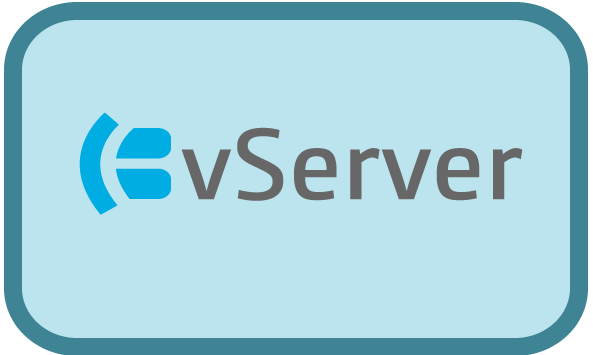vServer
AI Based Policy Engine
BeacenAI Autonomous Infrastructure: A Paradigm Shift in Enterprise Computing
The BeacenAI Platform introduces a groundbreaking transformation in infrastructure deployment, workload provisioning, and session orchestration through the lens of AI-based autonomous infrastructure technology. Designed to operate at both the edge and across enterprise networks, the platform enables multiple secure sessions to run simultaneously on any endpoint. Its core components—the vServer Policy Engine, Beacen Secure Gateway, and zStation virtual operating system containers—work in tandem to deliver a resilient, self-healing computing architecture.
At the heart of the platform is the vServer Policy Engine, which governs real-time, policy-based dynamic composition of zStation environments. These virtual appliances can be deployed redundantly throughout the network to form a grid-enabled system, ensuring high availability, elasticity, and zero single points of failure. Each vServer autonomously manages hundreds of thousands of zStation containers, making it highly scalable and capable of supporting complex operational environments.
Encrypted, Modular, and Secure-by-Design
The Beacen Secure Gateway plays a critical role by securely brokering identity and access. It ensures all containerized workloads and user sessions are authenticated and encrypted using policy-enforced tunnels. This secures data in motion and complies with stringent enterprise cybersecurity protocols.
The zStation container environment is a fully modular 64-bit Security-Enhanced Linux (SELinux) distribution. Unlike monolithic Linux systems, zStation is dynamically composed in real time based on device attributes, user identity, and mission context. Leveraging AI for runtime orchestration, zStation can be up to 1,000 times smaller than traditional distributions, running entirely in volatile RAM for unmatched security, performance, and speed. This non-persistent, stateless architecture virtually eliminates malware, ransomware, and unauthorized software execution vectors.
Zero Trust, Software-Defined, and Hypervisor-Enabled
BeacenAI enforces zero trust principles at the infrastructure level. Each zStation ca include a virtual network switch that extends Software-Defined Networking (SDN) policies to the edge, enabling application-level traffic segmentation and isolation. This architecture brings data center-grade network security directly to endpoints and field devices.
The platform also integrates a lightweight, Type 1 KVM-based hypervisor capable of running secure virtual machine workloads independently of the host system. Guest VMs can be streamed over the network or locally cached with AES-128 loop encryption. The hypervisor supports direct device passthrough, emulation modes, and cross-architecture compatibility (e.g., SPARC, MIPS, Itanium), enabling support for legacy and specialized systems.
Distributed Services with Enterprise-Scale Resilience
By leveraging AI and policy-driven automation, BeacenAI dynamically assigns workloads across the network, ensuring optimal resource utilization and load balancing across both servers and endpoints. This decouples applications from specific hardware, transforming edge devices, and servers into generalized compute nodes that can run any assigned workload
This modularity empowers the platform to operate in hybrid environments, supporting both virtual machines and native Linux applications. BeacenAI provides compatibility with standard IDEs, compilers, and virtual desktop protocols (RDP, ICA, PCoIP, Blast), enabling seamless integration with existing development and deployment workflows.
Enterprise-Wide Deployment and Future-Ready Architecture
The BeacenAI vSeries architecture supports active-active redundancy across policy engines, forming a resilient, distributed services grid. All zStation containers and workloads adhere to SDN-based traffic rules, optimizing performance and reducing latency across constrained networks. This model unlocks the full capacity of the enterprise infrastructure by turning endpoints into secure, high-performance service hosts—requiring minimal administrative overhead.
Beacen vSeries Benefits
Plug-and-Play
Your computer becomes a true plug-and-play appliance, capable of working "out of the box" without the need for any administrative intervention. The installer only has to plug it in; and turn it on.
Fully Responsive
As technology continues its steady migration to mobile platforms it is not enough for the application to be the only responsive element. zStation’s modularity guarantees a completely responsive environment.
Secure
vSeries represents a new level of security, reducing if not eliminating attack vectors. Since the filesystem that the operating system resides on is read-only attachment points for viruses and malware simply don’t exist.
In-Memory
zStation endpoint operating environment operates exclusively in volatile RAM not requiring local storage for any operation. This architecture provides performance not attainable by traditional computer architectures.
Stateless
Remember when your computer was new, everything was fast and it just worked, as it gets older your computer seems slower, that’s because it is, operating system decay is a real issue. Since zStation is stateless it is new evry time you login.
Consistent
Policy based computing guarantees that the system is deployed in the ideal configuration. Both operating system and application workloads are always in the optimal configuration on all systems.



